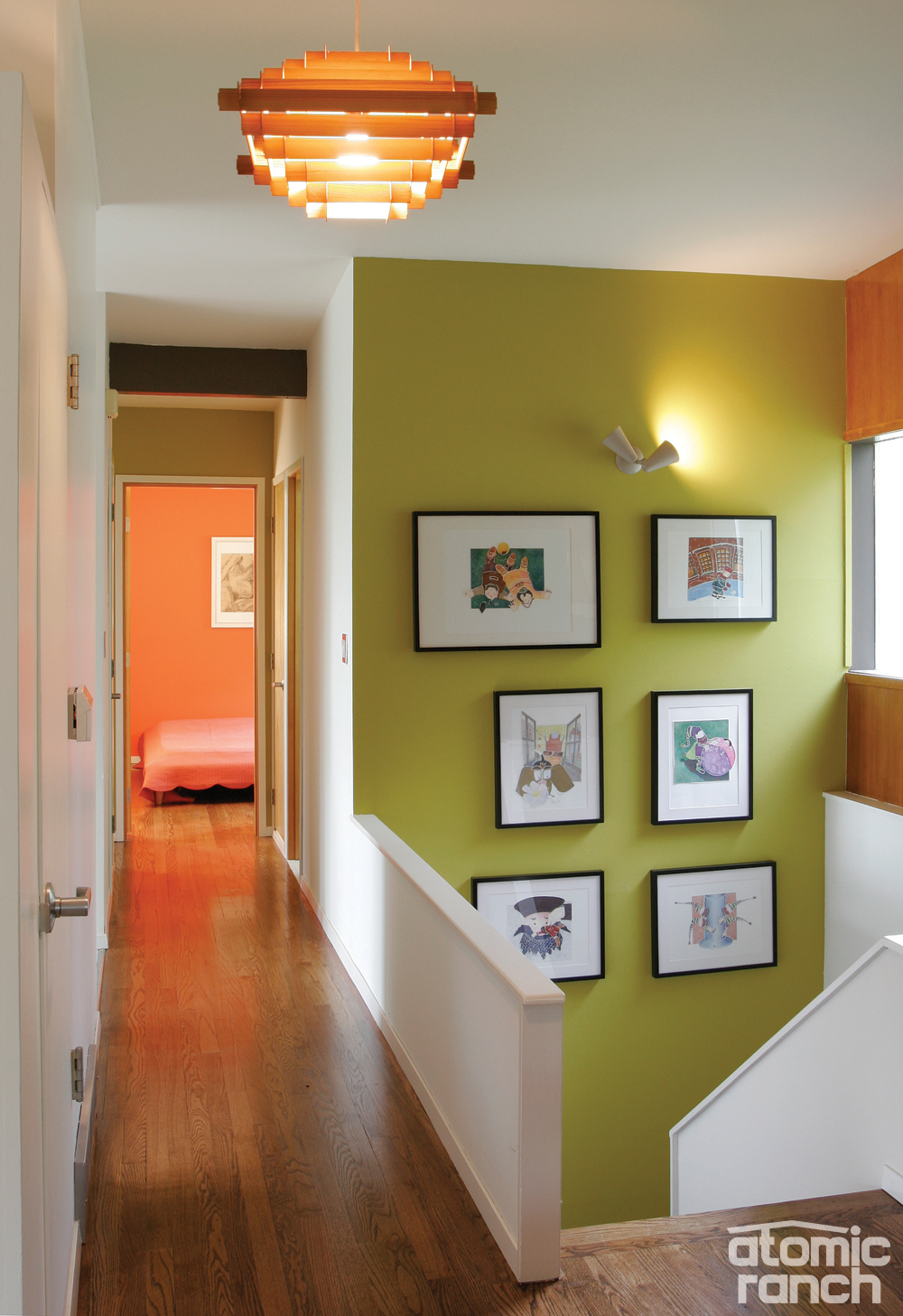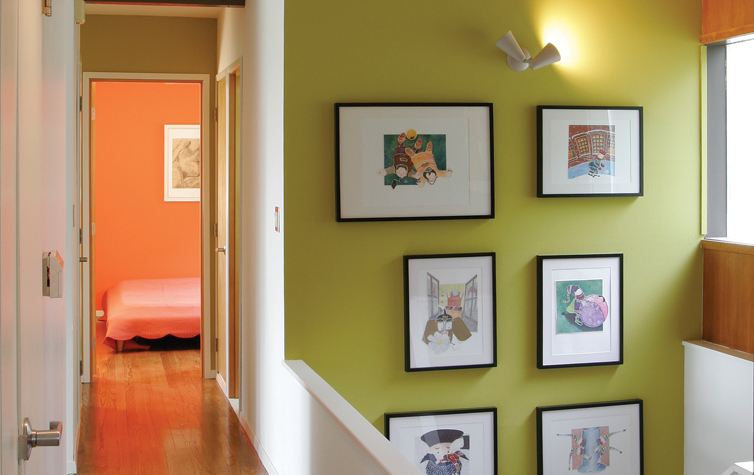
Have you ever thought of your hallway or staircase as a room? Probably not. Hallways are essential, but they’re the packaging, not the gift inside. We walk through them every day to get somewhere else—the kitchen, the living room, the upstairs bedroom—and we never stop to think that these transition areas should receive a little love. Take a critical look at your halls and staircases, and consider these three details you can use to brighten up the spaces and make them just as much a part of the decor as the rest of your home.
Color.
Use your hallways, stairs and other transitional spaces to provide contrast with the main living areas. For example, if the bedroom is mustard yellow, the kitchen has lime green cabinets and your living room features burnt orange, the hallway is a nice opportunity for a neutral transition between spaces. Stick with white. However, if you use a lot of neutrals in your living areas, the hallway might be the perfect place to break out of your comfort zone and include a little color. Pick up on one of the tones you use in a surrounding room and paint the hall. Either way, the contrast will provide breathing room for the house, and help your transitional areas stand out as their own spaces.
Lighting.
If your halls don’t have any overhead lighting, walking down them can feel like a scene from The Shining. Get some lighting in there so you don’t have to hurry through the area at night or rummage around in any hall cabinets in the dark. Staircases are great opportunities to feature a classic midcentury pendant lamp—simply hang the piece from the area over the stairs, where no one will bump their heads.
Wall Art.
Who says you can’t feature art in a hallway? Once you have adequate lighting, you can use your hall or staircase to display art, midcentury pottery or other collectibles you’ve picked up along your MCM journey. Hang a single piece on the wall against the stair landing, where you’ll view it every time you walk up the stairs. You could also turn your hallway into a miniature art gallery and hang a small artist plaque next to each piece so visitors can enjoy your MCM art just as much as you do.












